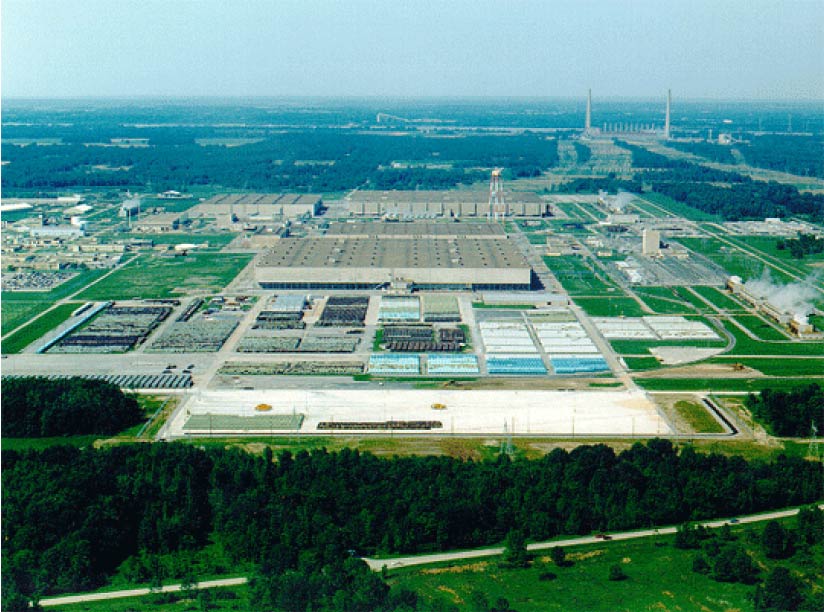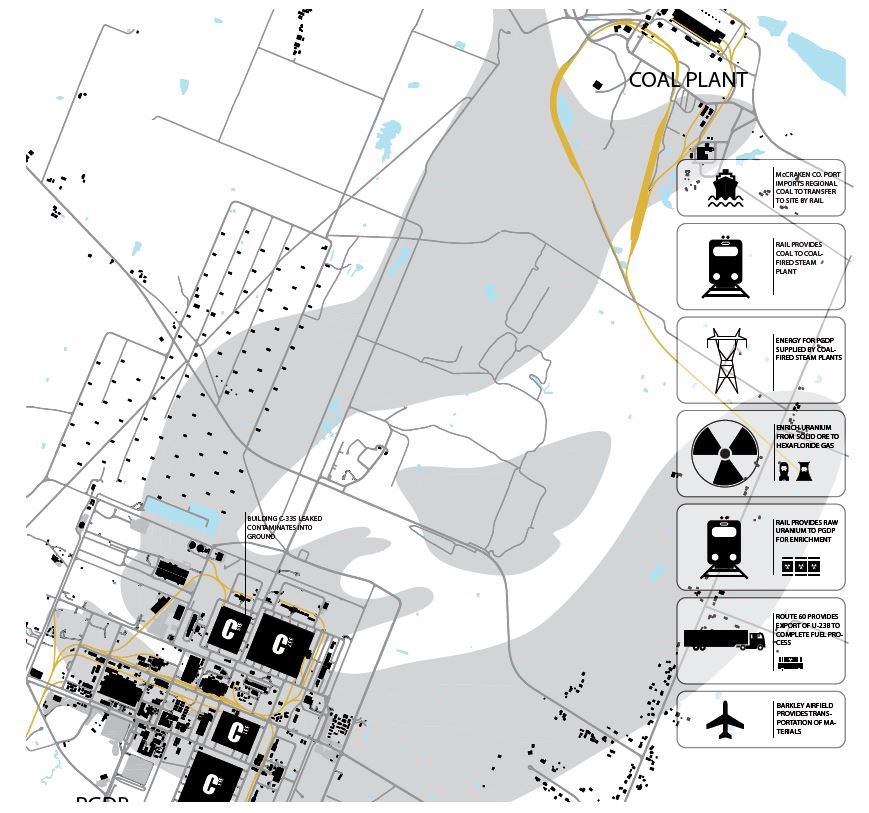Atomic City
Virtual Museum
SPRING 2015: ATOMIC CITIES STUDIO VI
The Virtual Museum studio was asked to conceptualize an online version of the Atomic City Museum. Relying on content developed in the previous studios, students explored diverse methods of sharing the long, complex story of the Paducah site with the general public in an online context. As they sought to open up new frontiers in online communication, learning, and experience, students also discovered new channels for architectural practice: interrelating the physical and the virtual, directly practicing environmental stewardship, and taking on significant communications challenges.
Objectives: The Atomic City Museum, Virtual Museum was charged with making a working prototype of a “Virtual Museum” within one semester’s time. This involved enormous organization, curation and writing effort – on top of the necessity for twelve students to learn web-design, and the amount of coding necessary to customize an interface as required. Much of the semester was spent gathering and composing materials while learning and applying web design skills, all under the complex question around the difference between a website and a virtual museum. Students placed enormous importance on interactive features as making the difference between a common website and the virtual museum they wanted to produce.
Outcomes: The studio prepared a mock-up of a virtual museum site. They defined hierarchy of information and proposed interactive exhibits or events for each of the many sections of the virtual museum. The initial Virtual Museum proposal covered topics from plant and Paducah history via interactive timelines; to the subject of enrichment with animations and virtual fly-throughs of the enormous buildings on site; to the subject of groundwater and aquifer contaminants via virtual walkthroughs and fly-throughs of the aquifer and plume of contaminants below. The studio also proposed an oral histories section that would include interviews and story-telling provided by plant workers, their families, and Paducah residents with ties to the plant. This studio’s work became the basis for the virtual museum work provided to KRCEE and the DOE over the next decade.
PROJECT TEAM
INSTRUCTOR / Co-PI:
Associate Prof. Gary Rohrbacher
Co-PI:
Associate Prof. Anne Filson
POST-GRAD RESEARCH ASSISTANTS:
Carolyn Parrish
Sydney Kidd
Joe O’Toole
Margaret Clines
STUDENTS:
(To be Posted)




